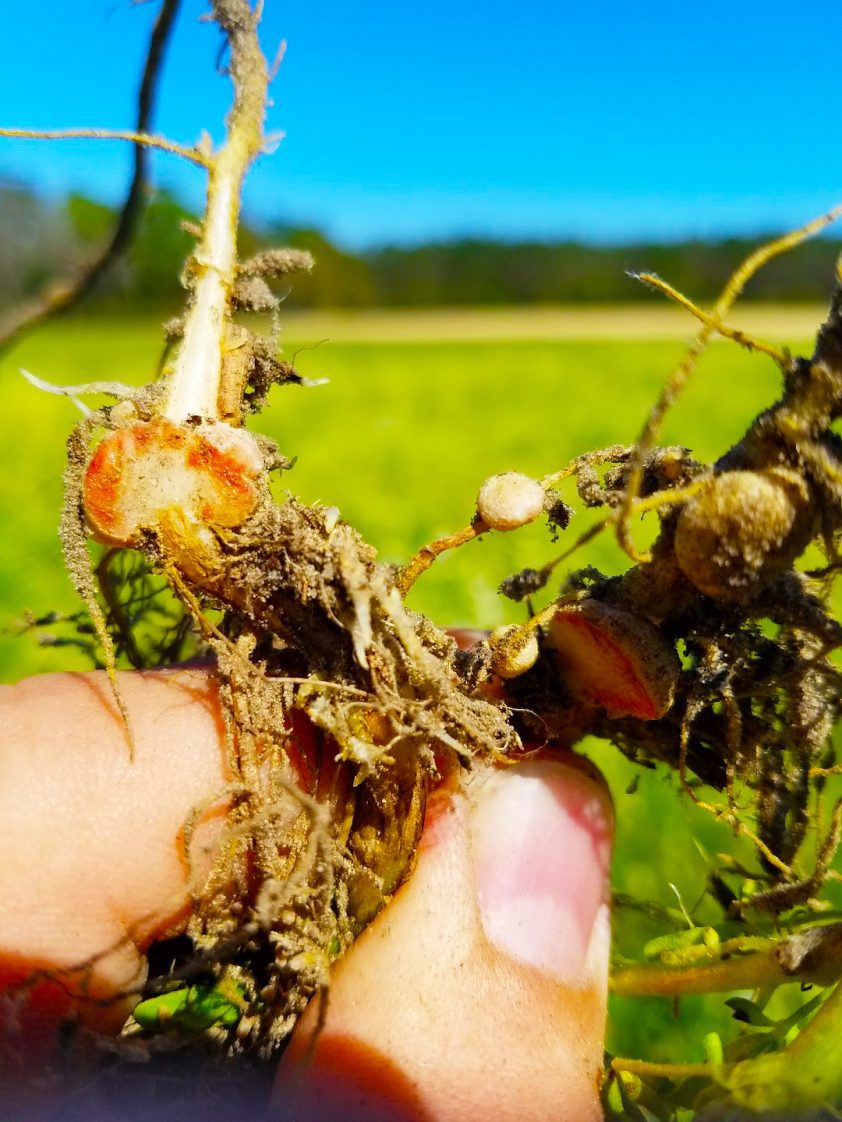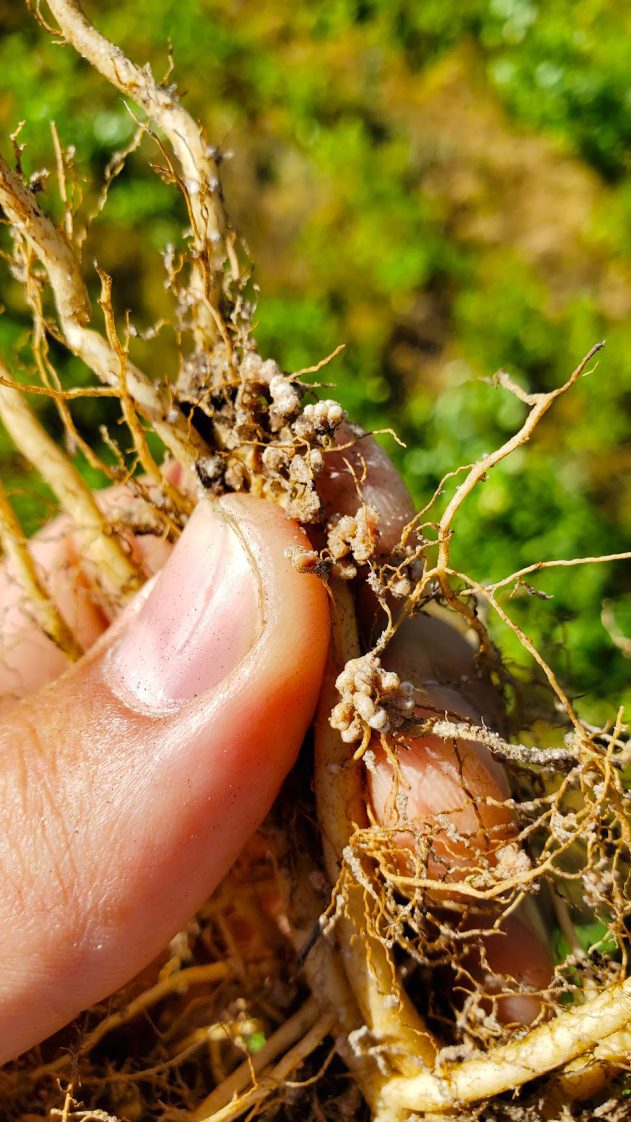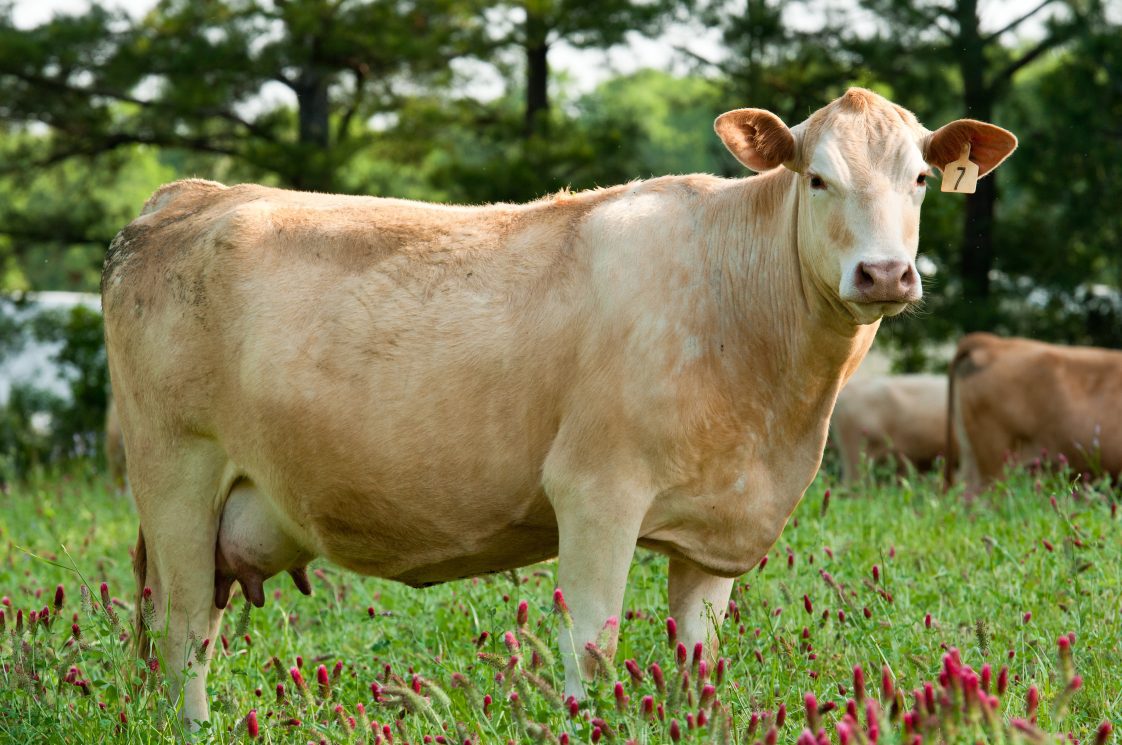Farming

In times of increased fertility input costs, forage legumes are generally revisited as an option to help provide nitrogen (N) in forage systems. Understanding how forage legumes work in our southeastern systems is important, especially when most forage legumes are grown in mixtures with grasses during the growing season.
Forage legumes provide many benefits to livestock operations through increased forage quality, added plant diversity to pasture systems, and biological nitrogen fixation (BNF). Legumes have a mutually beneficial relationship with soil bacteria Rhizobium that can colonize legume root hairs to form small nodules. These bacteria help remove nitrogen gas from the atmosphere and convert it to a plant-usable form. This process is referred to as biological nitrogen fixation. While the legume plant receives nitrogen sourced by the bacteria, the bacteria receive sugars from the host legume, illustrating a mutually beneficial relationship.

(Photo credit: Marcelo O. Wallau, Assistant Professor, Forage Extension Specialist, Agronomy Department, University of Florida)
In some cases, seed inoculation may be required to ensure that healthy populations of Rhizobium are present in the soil. Seed inoculation before planting ensures proper conditions for nitrogen fixation by legumes. Most forage legume seeds are pretreated with an inoculant, but if inoculation is required, it is important to apply the proper Rhizobium strain before planting to facilitate nodulation and proper nitrogen fixation.
Biologically fixed nitrogen is available first to the legume once the roots have been infected and nodulated. As legume plants age, the number and size of nodules on the roots can be used to indicate relative nitrogen fixation. A good way to see if fixation is occurring is to dig up mature legume plants and look for nodules along the roots. If the color inside the nodule is pink-to-red, this is a sign of active nitrogen fixation. Conversely, a pale white interior indicates a dead, nonfunctioning nodule.
Legumes can help provide a source of nitrogen for grasses in a pasture through a give-and-take relationship. Defoliation of legumes, either by grazing or mowing, can cause the roots to die back, releasing some nitrogen to be used by surrounding plants.
Aboveground legume leaf litter, or leaves that have fallen from plants over time, can decompose and return to the soil, serving as a slow-release source of nitrogen. Grazing animals also recycle nutrients back to the soil while grazing mixed legume-grass pastures. This setting represents another source of nutrient recycling in the form of urine and manure. In other words, nitrogen fixed by forage legumes takes time to become available to surrounding grass plants in a stand.
Some legumes are better at fixing nitrogen than others due to their differences in growth. Table 1 shows the average amounts of nitrogen fixed for various forage legumes in Alabama.
Table 1. Estimated Annual Nitrogen Fixation of Common Forage Legumes in the Southeast
+Adapted from Ball et al. (2016)
| Legume Species | Nitrogen Fixed (lb N/acre/year) |
|---|---|
| Alfalfa | 50 to 300 |
| Cowpea | 30 to 90 |
| Crimson Clover | 30 to 150 |
| Lespedeza, Sericea | 40 to 100 |
| Perennial Peanut | 50 to 250 |
| Red Clover | 50 to 250 |
| Soybean (Forage-type) | 55 to 160 |
| Vetch (Hairy) | 50 to 150 |
| White Clover | 30 to 250 |
Legumes in Grass-Based Systems

(Photo credit: Marcelo O. Wallau, Assistant Professor, Forage Extension Specialist, Agronomy Department, University of Florida)
The range of nitrogen fixation potential for the species in table 1 is wide and partially related to legume plant presence in the stand and growing conditions. It is generally recommended that legumes make up at least 30 percent of the pasture for no additional nitrogen to be applied. The lower end of the range in table 1 would represent the amount of N fixed when 20 to 30 percent of the stand consists of legumes, whereas the upper end would reflect pure stands of legumes under nearly ideal growing conditions. Legume plants should be well distributed across the pasture to see a more uniform response. Consistent use of legumes in pastures will help build soil quality, increase plant diversity in pastures, and provide an increased plane of nutrition in beef cattle grazing systems.
When incorporating legumes into your pastures, carefully consider the establishment and management of the legume(s) to encourage a healthy stand. Establishing and maintaining a prolific legume stand first requires an increased pH level (between 6.0 to 6.5 is recommended). Additionally, when managing grass- legume mixtures, always amend your pastures to meet the legume requirements. This may consist of yearly lime and nitrogen (N) applications based on your soil test report. These amendments will ensure that your established legumes will be encouraged to persist in the following years.
Depending on the chosen establishment method, legumes and grasses can be seeded at the same time, separately, or at different seasons during the year in an overseeding or sodseeding practice (see Alabama Extension publication Alabama Forage Basics Handbook, ANR-2845, for more information). Again, preference should be given to the legume during establishment. Be sure to avoid planting legume seed too deep; this is often the most common issue attributed to stand failures. The recommended seeding depth is 1⁄4″ to 1⁄2″ for most forage legume crops. The establishment and persistence of legumes can take time. Species like perennial clovers often require a year or more to become consistently visible in a field year after year.
For more information on legume establishment and forage mixtures, visit the “Alabama Planting Guide for Forage Legumes” on the Alabama Extension website at www.aces.edu.
 Micayla West, Graduate Research Assistant, Kim Mullenix, Extension Beef Specialist, and Leanne Dillard, Extension Forage Specialist, all in Animal Sciences; and Landon Marks and Gerry Thompson, both Regional Extension Agents, Animal Science and Forages, all with Auburn University.
Micayla West, Graduate Research Assistant, Kim Mullenix, Extension Beef Specialist, and Leanne Dillard, Extension Forage Specialist, all in Animal Sciences; and Landon Marks and Gerry Thompson, both Regional Extension Agents, Animal Science and Forages, all with Auburn University.
New August 2023, Forage Legumes and Nitrogen Fixation, ANR-3023

